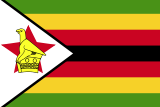Cooking Tips
Mouse over a link below
- Meatloaf success factors
MEATLOAF SUCCESS FACTORS
No complicated techniques here; just some easy to follow advice to make you a meatloaf master.
Fat is Your Friend
No matter which meat you decide to use, the right ratio of lean meat to fat is a critical factor in determining the texture and moisture of your meatloaf. An 80% meat to 20% fat ratio is the generally accepted formula as there is a fine line between juicy and greasy.
Vegetables are Your Other Friend
By adding finely diced or pureed aromatic vegetables to your mixture, you are adding additional moisture into the meatloaf. Not only does this make your final product juicier, but it also adds lots of extra flavor.
How Much Filler is Killer?
Breadcrumbs were originally added to the meat out of necessity to stretch it. Some recipes from the 1930's actually called for a 50% ratio of breadcrumbs! Today’s meatloaves contain much lower percentages, usually between of 15 and 25%.
Use a Meat Thermometer to Determine Doneness
Cooking times alone for meatloaf just don't work. How does that cookbook know exactly how thick you shaped your loaf, or if your oven is properly calibrated? A thermometer takes away all those variables. Cook your meatloaf to an internal temperature of 68 to 71 degrees Celsius, and you will be rewarded with a moist loaf every time.
Slow and Low is the Way to Go
The ideal oven temperature for a moist meatloaf is between 165 degrees C and 180 degrees C . Too hot ovens will reduce the cooking time, but tend to dry out the meat.
Do Not Over Mix!
This is a very common mistake that can really make for meatloaf with a tough, dry texture. Self-control is the key; once the ingredients are mixed in, STOP! Remember, the meatloaf is going to be mixed more as it's shaped before baking.
- Potjiekos success factors
- POTJIEKOS SUCCESS FACTORS
Every potjiekos chef has his own secrets and special way of doing things. However, most master potjiekos chefs agree that there a few non–negotiables when it comes to preparing the ultimate potjiekos.
- Don't stir the pot. Ever. You are allowed to move things around ever so slightly but never stir!
- Always make sure there is enough liquid at the bottom of the pot — just enough to cover the meat.
- There is a difference between a potjie and a stew — don't mix everything together, it shouldn't look like a stew once you're done! The meat should be at the bottom with the veggies in layers — steamed to perfection. The veggies should be soft but still firm.
- Keep the fire stoked just enough for it to simmer for two and a half hours, keeping the pot covered. If you place your ear near the pot, you will be able to hear how rapidly it is simmering, and adjust your fire accordingly. If you're not sure that it is simmering just right take a quick peek, but the idea is to remove the lid as infrequently as possible.
- The concept of potjie cooking is quite simple. The shape and design of the three legged cast iron potjiepot, thicker at the base than at the top, is such that it heats evenly from top to bottom. Despite the coals being directly under the pot, it is surprisingly hot just below the rim, which ensures even cooking without stirring once you layer in the vegetables.
- Defrost Chicken Safely
3 Ways to Defrost Food Safely
Some approaches to thawing food, like leaving it on the counter all day, are unsafe and can cause illness. You've got 3 choices for safely thawing any type of food. Here's what you need to know about each:
1. Refrigerator Thawing
This is certainly the easiest method for defrosting frozen food — just stick it in the fridge and wait until it's thawed. But you may be waiting longer than you thought. It usually takes an entire day to thaw even a small amount of frozen food, such as a pound of ground meat or boneless chicken breasts. For large items, like a whole turkey or ham, it'll take about 24 hours of defrosting time for every 5 pounds of food.
All that waiting does have a payoff, though. A major advantage of refrigerator thawing is that you don't have to cook the defrosted food right away — especially helpful if you're faced with a last–minute change in plans.
Poultry, fish and ground meat that's been defrosted in the fridge can be kept for an additional 1 to 2 days in the refrigerator before cooking. Beef, pork, lamb or veal (roasts, steaks or chops) will keep refrigerated for another 3 to 5 days after thawing.
Another plus: If you decide not to cook the thawed food, you can safely refreeze it within these same time limits.
2. Cold Water Thawing
The upside to this approach is that it's much faster than refrigerator thawing. The downside is that it requires a lot more attention on your behalf. To thaw the food, submerge the bag in cold tap water. Never use hot water, as that can cause the outer layer of the food to heat up to a temperature where harmful bacteria begins to multiply. You'll need to change the water every 30 minutes to ensure that it stays sufficiently cold. Using this thawing method, small packages of frozen meat or poultry (about a pound) can defrost in one hour or less. For larger items, you should estimate about 30 minutes of defrosting time per pound of food. Once the food is thawed completely, you'll need to cook it immediately. If you have a change in plans, you can safely refreeze the food once you've cooked it thoroughly.
3. Microwave Thawing
The microwave, as you might expect, offers the speediest method of defrosting food.
Set your microwave to the "defrost" or "50 percent power" setting while thawing to ensure that the outer edges of the food don't become cooked while the remainder is still frozen. If you're defrosting a package of meat, poultry or fish that is in pieces, separate them as the food thaws.
If you use the microwave thawing method, you'll need to cook the food immediately after it's thawed. Once you've cooked the food, you can safely refreeze it if you like.
How Not to Thaw Food
It may be tempting to just leave your frozen food out on the cupboard to thaw — it's easy and it's fast. Don't do it. Nor should you thaw food in hot water.
The problem with both of those methods is that the outer layer of the food can sit between the bacteria–breeding temperatures of 40 ºF and 140 ºF for far too long to be safe.













